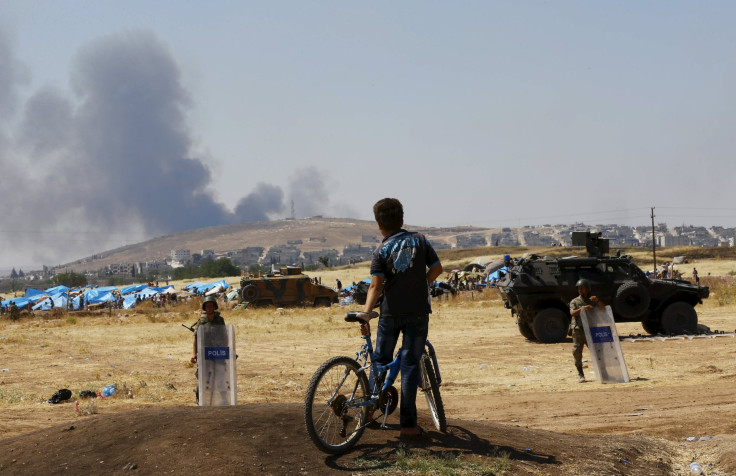ISIS Used Unknown Poison Gas Against Kurdish Fighters In Northeastern Syria: Kurds, Monitor Group

The Islamic State group used poison gas against Kurdish fighters in northeastern Syria in late June, a Syrian Kurdish militia and a group monitoring the conflict in the country said Saturday. According to a doctor’s testimony, the chemical weapons used by ISIS caused serious physical distress among Kurdish Yekîneyên Parastina Gel (YPG) fighters, the armed wing of the Democratic Union Party (PYD) in Rojava, the Kurdish region of Syria.
The Kurdish YPG militia said that ISIS had fired “makeshift chemical projectiles” on June 28 at YPG-held area in the northeastern city of Hasaka, and at other YPG positions, south of the town of Tel Brak, which lies northeast of Hasaka, Reuters reported.
It was the first time ISIS used chemical weapons against the YPG, Redur Xelil, a spokesman for the militia, reportedly said Saturday, adding that the type of chemical used in the attack could not be determined. According to Xelil, none of the affected YPG fighters died as they were rushed to hospital immediately after the attack.
The YPG fighters exposed to the gas “experienced burning of the throat, eyes and nose, combined with severe headaches, muscle pain and impaired concentration and mobility,” the militia said in a statement, according to Reuters. “Prolonged exposure to the chemicals also caused vomiting.”

The Syrian Observatory for Human Rights (SOHR), a U.K.-based monitor group investigating the Syrian conflict, said it had also documented the use of poison gas by ISIS, but could not determine whether the chemical used was chlorine or some other gas.
“SOHR documented IS use of gas during its shelling that targeted the village of Rajm al- Tfihi located in the south of Tal Brak town in the province of al- Hasakah in 28 June, according to doctors’ testimony and analyses, where SOHR knew that the shelling by gas caused vomiting, suffocation and eye-burn suffered by 12 YPG fighters,” the monitor group said in a statement on Friday.
Meanwhile, the U.S. government reportedly said that it was aware of the reports of chemical weapons allegedly used by ISIS, and was seeking further information “to monitor these reports closely.”
Last month, Australian Foreign Minister Julie Bishop said that ISIS has among its recruits highly trained technicians who are capable of building chemical weapons. Bishop also said that the extremist group has been using toxic chemicals including sarin and chlorine over the past four years.
“The use of chlorine by Daesh [the Arabic acronym for ISIS], and its recruitment of highly technically trained professionals, including from the west, have revealed far more serious efforts in chemical weapons development,” Agence France-Presse quoted Bishop as saying. “Daesh is likely to have amongst its tens of thousands of recruits the technical expertise necessary to further refine precursor materials and build chemical weapons.”
© Copyright IBTimes 2025. All rights reserved.






















